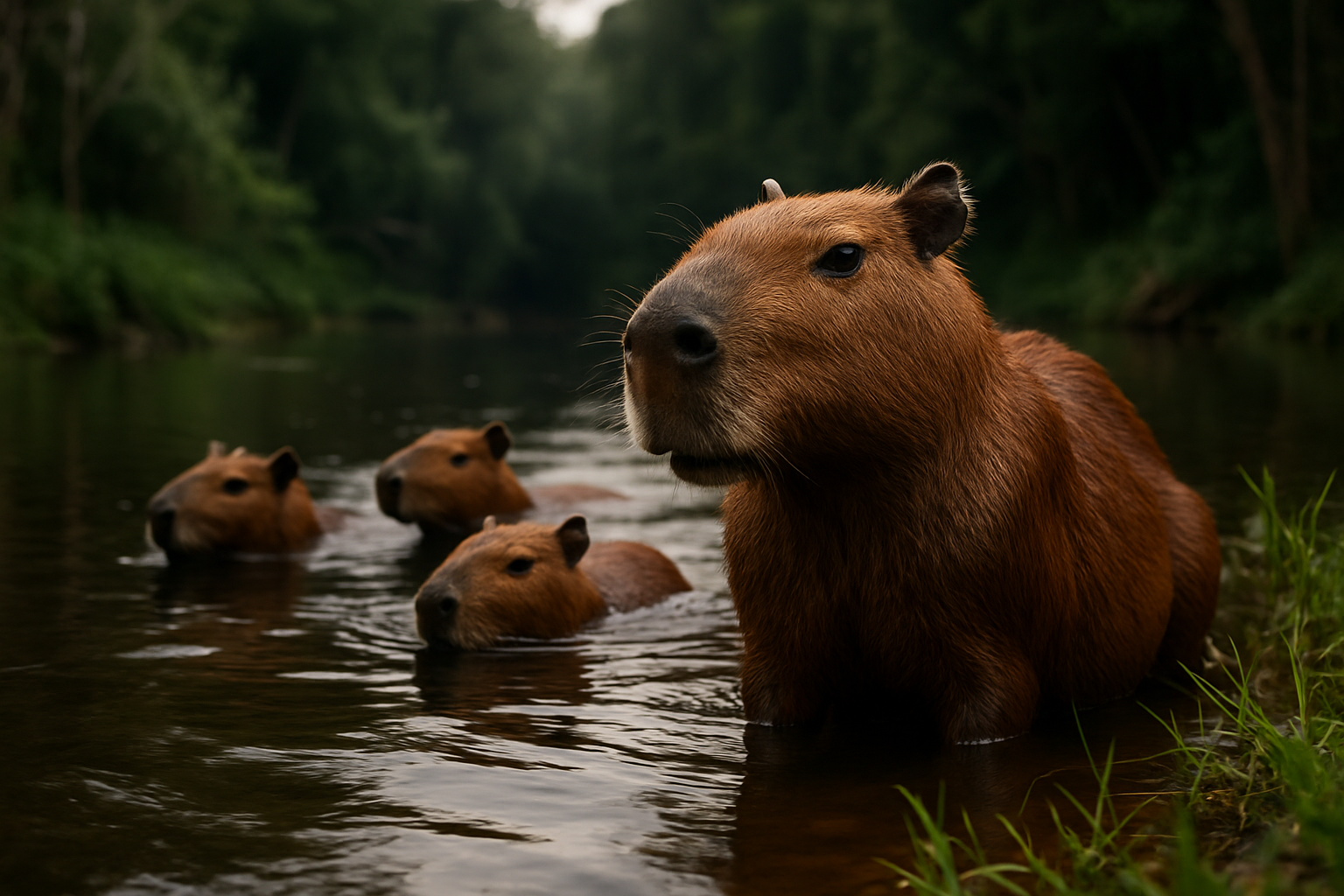Capybaras: Nature's Lovable Couch Potatoes
Gentle giants of the rodent world, capybaras are capturing hearts worldwide with their laid-back demeanor and adorable appearance. These South American natives have become internet sensations, sparking curiosity about their unique characteristics and potential as exotic pets. This article delves into the fascinating world of capybaras, exploring their natural habitat, social behavior, and the growing trend of capybara-themed products and experiences.

The Capybara’s Natural Habitat
Capybaras are found throughout much of South America, particularly in countries like Brazil, Venezuela, and Colombia. These adaptable creatures thrive in a variety of habitats, including grasslands, forests, and wetlands. However, they are most commonly associated with areas near water sources such as rivers, lakes, and marshes.
Their semi-aquatic nature is evident in their physical adaptations. Capybaras have slightly webbed toes, which aid in swimming and walking on muddy terrain. Their eyes, ears, and nostrils are positioned high on their heads, allowing them to remain mostly submerged while still being aware of their surroundings. This unique design enables capybaras to use water as a refuge from predators and a way to regulate their body temperature in hot climates.
Social Butterflies of the Animal Kingdom
One of the most endearing aspects of capybaras is their highly social nature. In the wild, these animals live in groups ranging from 10 to 40 individuals, although larger herds have been observed during the dry season when resources are scarce. These social structures are crucial for capybaras’ survival, providing safety in numbers and allowing for cooperative care of young.
Within these groups, capybaras engage in a variety of social behaviors. They groom each other, communicate through vocalizations and scent marking, and even engage in what appears to be cuddling. This social nature extends beyond their own species, as capybaras have been observed peacefully coexisting with a wide range of other animals, from birds to crocodiles.
The Capybara Diet: Vegetarian Gourmets
Capybaras are strict herbivores, with a diet consisting primarily of grasses and aquatic plants. Their digestive system is specially adapted to extract maximum nutrition from this fibrous diet. Like other rodents, capybaras have continuously growing incisors that help them efficiently crop vegetation.
Interestingly, capybaras practice coprophagy, the consumption of their own feces. This behavior, while seemingly unappetizing to humans, allows these animals to maximize nutrient absorption from their plant-based diet. The practice is particularly important for young capybaras, as it helps them develop the necessary gut bacteria for digesting tough plant material.
Capybaras in Human Culture
The growing popularity of capybaras has led to their increased presence in various aspects of human culture. In some parts of South America, capybaras have been traditionally hunted for their meat and hide. However, in recent years, there has been a shift towards conservation and appreciation of these animals.
In Japan, capybaras have become particularly beloved, with several hot spring resorts offering capybara bathing experiences. These events, where capybaras soak in warm baths filled with yuzu fruits, have become viral sensations, drawing visitors from around the world. The estimated cost for participating in such an experience can range from $20 to $50 per person, depending on the location and duration.
The capybara craze has also spawned a market for capybara-themed merchandise. Plush toys, clothing items, and home decor featuring these lovable creatures have become increasingly popular. Prices for these items can vary widely, with small trinkets starting at around $5 and high-end collectibles or artwork reaching upwards of $100 or more.
Conservation Concerns and Future Outlook
While capybaras are not currently considered endangered, they face various threats in their native habitats. Habitat loss due to agricultural expansion and urban development is a significant concern. Additionally, in some areas, capybaras are viewed as agricultural pests, leading to conflicts with farmers.
Conservation efforts are underway to protect capybara populations and their habitats. These initiatives often focus on sustainable land management practices and educating local communities about the ecological importance of capybaras. Some countries have implemented regulations on capybara hunting to ensure population stability.
As interest in capybaras continues to grow, there is hope that increased awareness will lead to stronger conservation efforts. However, it’s crucial to balance this newfound popularity with responsible practices to prevent exploitation of these gentle creatures.
In conclusion, capybaras represent a unique blend of charm, adaptability, and social intelligence in the animal kingdom. Their rising popularity offers opportunities for education and conservation but also necessitates careful consideration of their welfare. As we continue to learn more about these fascinating creatures, it’s clear that capybaras have much to teach us about coexistence, both in the natural world and with humans.





